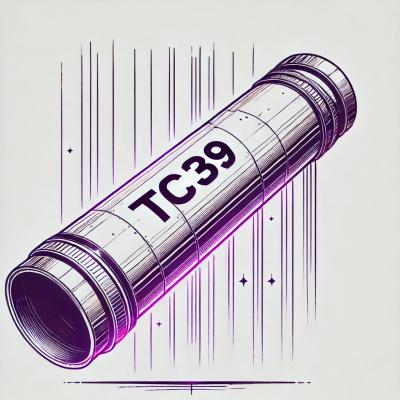
Security News
NVD Quietly Sweeps 100K+ CVEs Into a “Deferred” Black Hole
NVD now marks all pre-2018 CVEs as "Deferred," signaling it will no longer enrich older vulnerabilities, further eroding trust in its data.
PIT is a tiny javascript library (made mainly to be used with WebGL applications) that allows you to check for input in a pollable manner.
It is common in websites to handle input in an event-based way, but sometimes for highly interactive applications that have an update loop running every frame it is a lot easier to check for input instead of juggling around with the events.
Currently PIT supports the following:
PIT has no external dependencies
$ npm install pit-js --save
import {InputController} from 'pit-js'
let input = new InputController();
input.init(document.body); //element to listen events on
let animate = function () {
if(input.left_mouse_button_pressed) // on mobile left mouse button represents the primary touch
console.log('pressed')
if(input.left_mouse_button_down)
console.log('down')
if(input.left_mouse_button_released)
console.log('released')
console.log("pointer_pos", input.pointer_pos) // on desktop this is mouse position, on mobile this will represent the primary touch position
console.log("normalized pointer pos", input.NDC) // NDC stands for normalized device coordinates
input.clear(); // call this to prepare for next frame
requestAnimationFrame( animate ); // must be after the .clear()
};
animate();
The API provides the following accesible properties
let input = new InputController(dom_element, subregion_dom_element)
// dom_element will be the main element onto which the events will be hooked into.
// If a subregion_dom_element is provided, then the NDC coordinates will be reported relative to
// that space. This will allow you to keep moving the mouse outside the area of interest
// while still receiving events of the parent element. Notice that if the mouse goes outside
// of the subregion, the NDC coordinates will also be outside the [-1..1] range.
input.left_mouse_button_pressed //boolean, works for left mouse button or first touch on the screen (primary touch)
input.left_mouse_button_down //boolean, works for left mouse button or first touch on the screen (primary touch)
input.left_mouse_button_released //boolean, works for left mouse button or first touch on the screen (primary touch)
input.right_mouse_button_pressed //boolean, mouse only
input.right_mouse_button_down //boolean, mouse only
input.right_mouse_button_released //boolean, mouse only
input.middle_mouse_button_pressed //boolean, mouse only
input.middle_mouse_button_down //boolean, mouse only
input.middle_mouse_button_released //boolean, mouse only
input.pointer_pos //{x,y} screen coordinates of the mouse (or primary touch) position
input.pointer_pos_delta //{x,y} difference between previous position and current position.
input.NDC //{x,y} [-1..1] normalized device coordinates for mouse or primary touch
input.NDC_delta //{x,y} [-1..1] difference between previous normalized position and current normalized position
input.pointer_center //{x,y} the center of all active touches. If using mouse, this is the same as pointer_pos
input.pointer_center_delta //{x,y} the center of all active touches. If using mouse, this is the same as pointer_pos
input.pointer_center_NDC //{x,y} [-1..1] the center of all active touches. If using mouse, this is the same as pointer_pos
input.pointer_center_NDC_delta //{x,y} [-1..1] difference between previous normalized center and current one
input.scroll_delta //float - this is equivalent to the mouse wheel (-1, 0, 1) or dragging with one finger [-x..x] measured in pixels
input.zoom_delta // float - this is equivalent to the mouse wheel (-1, 0, 1) or pinching with two fingers [-x..x] measured in pixels
input.pointer_count //int - returns 1 if any mouse button is down, or return the amount of active touches
input.pointers //Pointer - Returns a pointer object, for advanced pointer handling
input.pointer_is_within_bounds //boolean, true if the mouse or primary touch is contained within the bounds of the subregion
input.pointer_is_over_element(html_element) //boolean, true if the pointer is over an html element
// these 4 methods are the same as the above but you can choose the pointer index
input.get_pointer_pos(pointer_index)
input.get_pointer_pos_delta(pointer_index)
input.get_pointer_NDC(pointer_index)
input.get_pointer_NDC_delta(pointer_index)
When a button is pressed on the mouse, or the first finger is put on the screen, the following actions will occur:
// On the first frame the button was pressed
input.left_mouse_button_pressed // true
input.left_mouse_button_down // true
input.left_mouse_button_released // false
// On the following frames, while the button is kept pressed
input.left_mouse_button_pressed // false
input.left_mouse_button_down // true
input.left_mouse_button_released // false
// On the last frame, when the button is released
input.left_mouse_button_pressed // false
input.left_mouse_button_down // false
input.left_mouse_button_released // true
As you can see the button_pressed and button_released will only be true on exactly one frame.
When using input.pointers you get an array of Pointers. The Pointer class has the following useful properties an methods:
id : integer
pressed : boolean //called once when the pointer has been created (finger touching the screen)
down : boolean //called each frame the pointer is active (finger kept on the screen)
released : boolean //called once when the pointer has been released (finger leaving the screen)
position : vec2 // position in pixels, relative to viewport
position_delta : vec2 // position delta per frame in pixels, relative to viewport
NDC : vec2 // normalized position, relative to subregion
NDC_delta : vec2 // normalized position delta, relative to subregion
distance_to(pointer) : float // distance in pixels from pointer to pointer, relative to viewport
In desktop, the mouse is represented as a pointer as well, and thus input.pointers will always return an array of 1 pointer object.
Keep in mind that input.pointers is sorted so that the first elements are the oldest pointers in the array. Here is an example for fingers A,B,C:
place finger A
place finger B
place finger C
input.pointers will have [A,B,C]
if then you release A
input.pointers will have [B,C]
but if instead you release B
input.pointers will have [A,C]
So you can't assume that input.pointers[0] will always be finger A. You need to use pointer.id if you need to keep track of pointers.
You can check out the examples folder, all you need to do is set up an http server for it to work, using something like http-server package.
npm install -g http-server
cd examples
http-server -p 80
This will mount an http server on the examples folder on port 80
MIT
FAQs
Pollable Input
The npm package pit-js receives a total of 13 weekly downloads. As such, pit-js popularity was classified as not popular.
We found that pit-js demonstrated a healthy version release cadence and project activity because the last version was released less than a year ago. It has 0 open source maintainers collaborating on the project.
Did you know?

Socket for GitHub automatically highlights issues in each pull request and monitors the health of all your open source dependencies. Discover the contents of your packages and block harmful activity before you install or update your dependencies.

Security News
NVD now marks all pre-2018 CVEs as "Deferred," signaling it will no longer enrich older vulnerabilities, further eroding trust in its data.

Research
Security News
Lazarus-linked threat actors expand their npm malware campaign with new RAT loaders, hex obfuscation, and over 5,600 downloads across 11 packages.

Security News
Safari 18.4 adds support for Iterator Helpers and two other TC39 JavaScript features, bringing full cross-browser coverage to key parts of the ECMAScript spec.